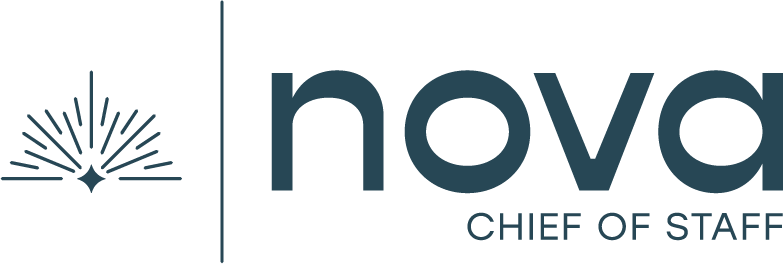Developing Your Chief of Staff Career Story
A Step-by-Step Guide
By Guest Author Katie Montbriand
In today’s competitive job market, your experience and skills alone aren’t enough to stand out. To truly capture attention—whether you’re applying for a Chief of Staff role, updating your LinkedIn profile, or building your professional brand—you need to tell a compelling story.
Before you write a cover letter, update your LinkedIn ‘about section,’ or draft a new resume to land a Chief of Staff role, I recommend taking a step back for deep reflection. Each Chief of Staff, current or aspiring, brings a unique combination of skills, strengths, and passions to the role. There are common underlying themes, which we’ll explore in this blog, but you have a special blend of what makes you uniquely qualified. Start by developing your story and THEN weaving it together with the requirements for the position you want to land. This approach is a powerful way to ensure you stand out.
Define Your Unique Chief of Staff Brand
Find a few quiet moments for reflection and answer these four questions:
How do you solve problems? What are 2-3 big, sticky things you were excited to work on, and how did you get things moving forward? What tactics, approaches, connections, or steps did you pull out of your bag of tricks?
How do you connect? Consider how you bring together people, ideas, and organizations. What’s your style? When do you shine brightest?
How do you keep things moving toward a goal? Are you a coach, taskmaster, process guru? How do people describe your approach?
a. If you don’t know, ask a few colleagues!
How do you bring new ideas to the table and influence others? Are you a behind-the-scenes player? Are you constantly scoping the landscape for new, exciting trends?
Whether you mind-map, make a list, or daydream, organize your thoughts. Look for the common points, themes, and connections. Now that you’ve defined your unique brand, it will form the core of your Chief of Staff story.
Understand Why You’re Drawn to the Role
Part of your career narrative is why you are excited about moving into a Chief of Staff role or keeping the CoS role. Paint a picture of why you want to be in the role.
Reflection questions:
What about the Chief of Staff position is compelling to you?
How does it fit into your broader career story?
Are you a CoS for life, or is this a pivot moment?
Are you looking to deepen certain skill sets while capitalizing on others?
Build Your Master List of Experiences and Examples
Once you’ve explored why you’re drawn to the Chief of Staff role, it’s time to showcase how your skills align with the role’s core competencies. If you haven’t been a Chief of Staff before, it means finding examples from your previous experiences demonstrating your competencies, abilities, and fungibility. If you have been in the role, this is where you’ll quantify and qualify your accomplishments.
Create a list of examples that cover core Chief of Staff skills like communication, strategic thinking, problem-solving, influence, project and program management, thought partnership, driving change and operational efficiency, and team leadership.
Make sure you cover your bases on culture, operations, and strategy—three important pillars of any CoS role.
Critical Capabilities Every Chief of Staff Story Should Include
Learning, adaptability, fungibility
Communication: up, down, lateral, cross-team, etc.
How you get things done: From scrappy to creating a process—you need to be able to do both
Indirect leadership: How do you get things done when you aren’t ‘the boss’?
Judgment: Can you focus on the right things?
Customize Your Story for a Specific Company and Role
Research the problems an organization is trying to solve and review the specific skills the organization is seeking. Dig into the culture, background, and external factors at play. Evaluate how your skills, story, and values fit into the organization’s future.
Refine your narrative to highlight how you solve the problems facing the organization. Adjust the skills you focus on to showcase your value in the most compelling way. Then address any specifics they are looking for that match what you have to offer.
Bring together the best of your unique value proposition, your why, and concrete examples from your previous experience to create a truly compelling story. By reflecting on what sets you apart and aligning it with the needs of your target position, you'll manifest a powerful narrative that captures attention and opens doors.
If you need help putting these together, consider purchasing my Career Storytelling Exercise or one of Nova’s coaching packages.
About Guest Author Katie Montbriand
Katie Montbriand spent a decade driving transformation at a Fortune 500 company. As Chief of Staff, she pioneered a first-of-its-kind team of ‘Culturists’ dedicated to enhancing employee engagement and fostering authentic workplace connections.
Bringing her passion for positive disruption to her latest venture, Lived and Loved, Katie enables people to access and share their career stories in innovative and impactful ways.

